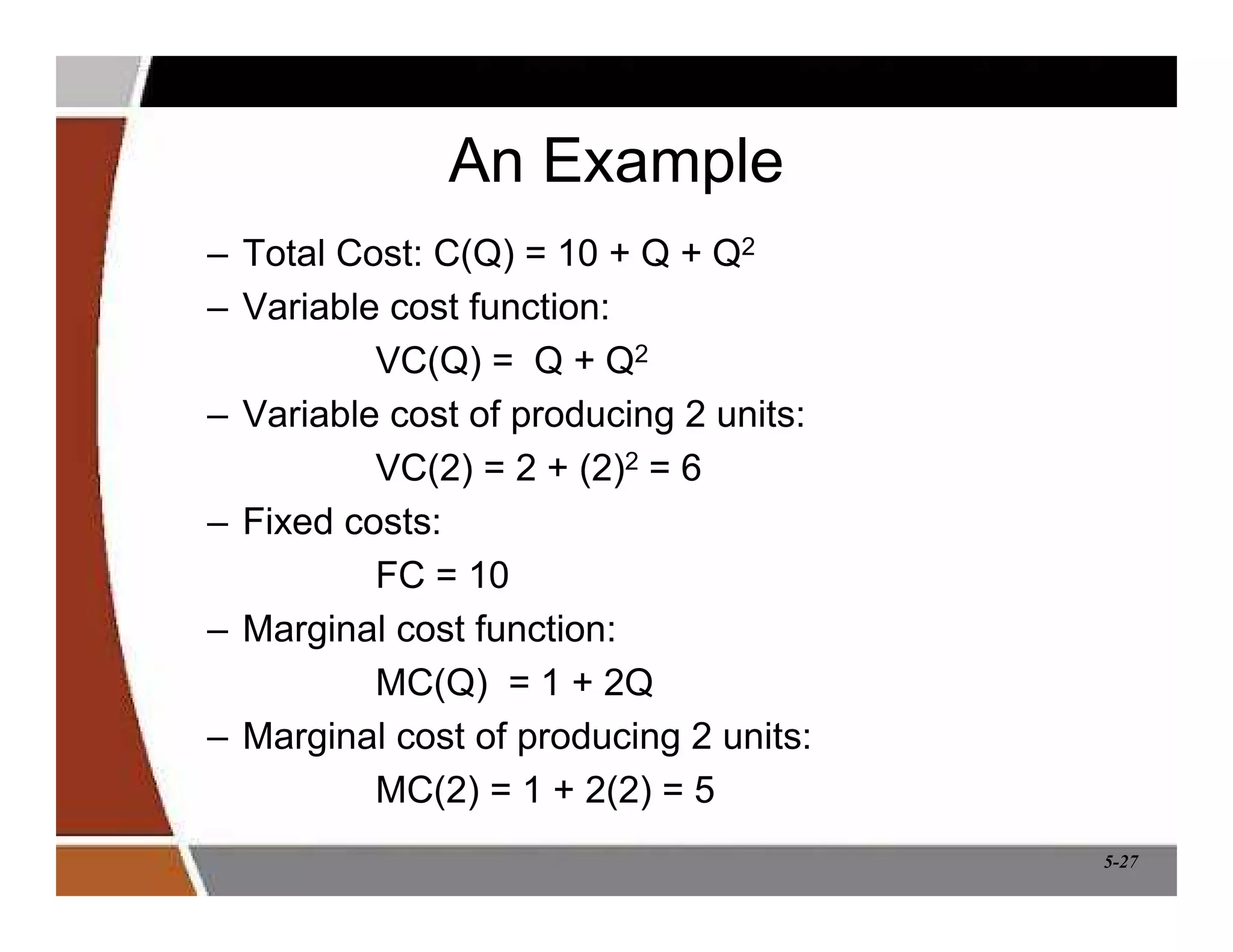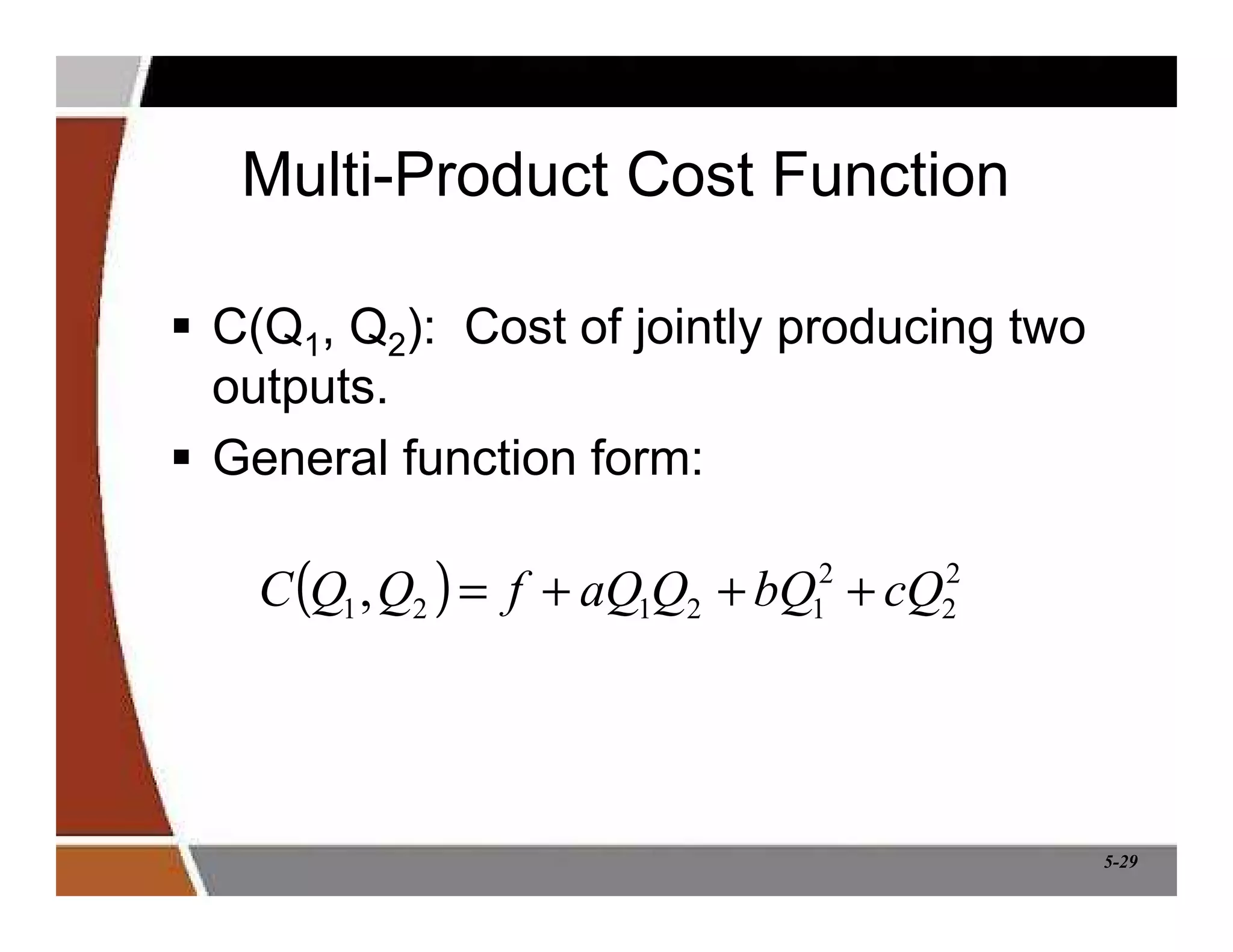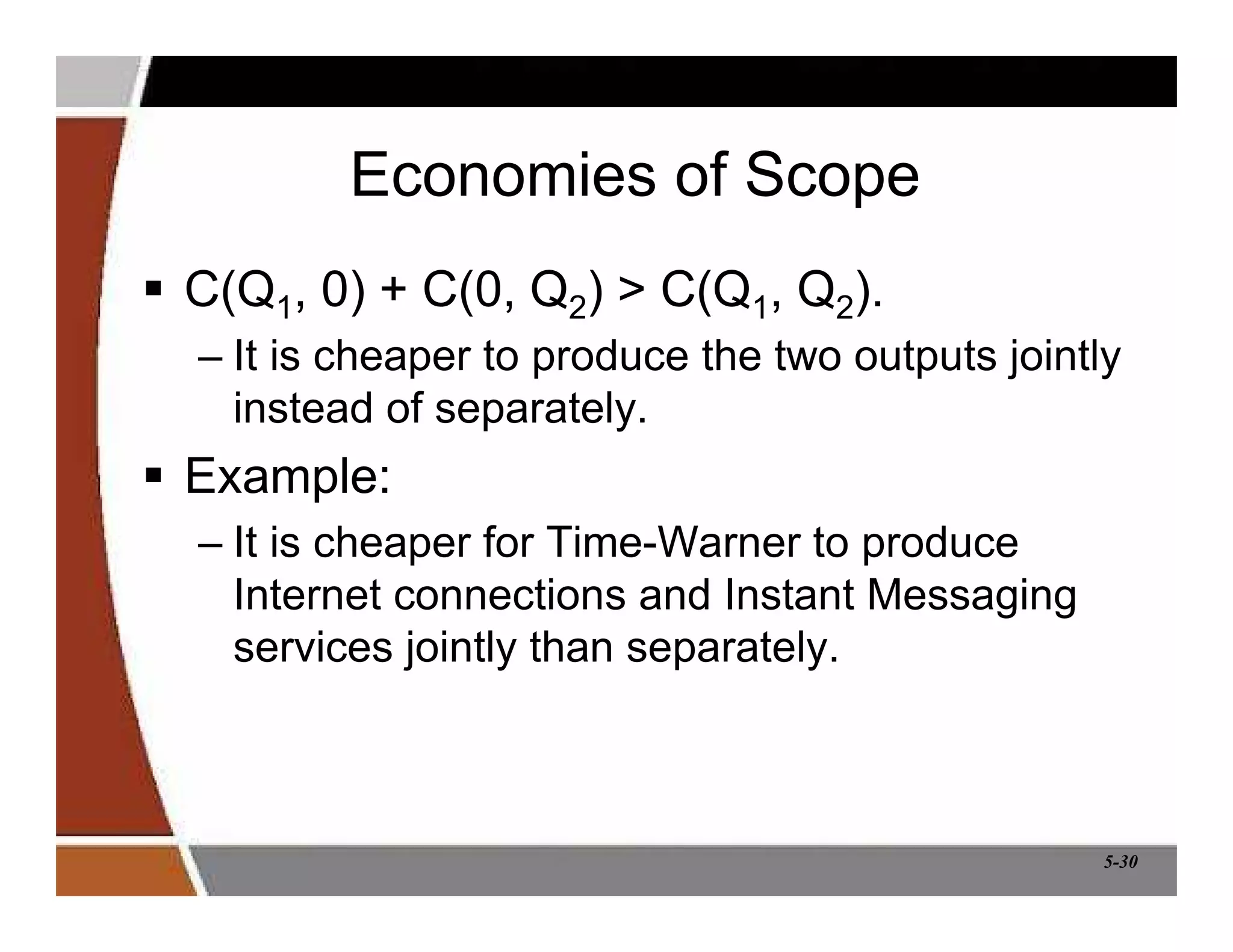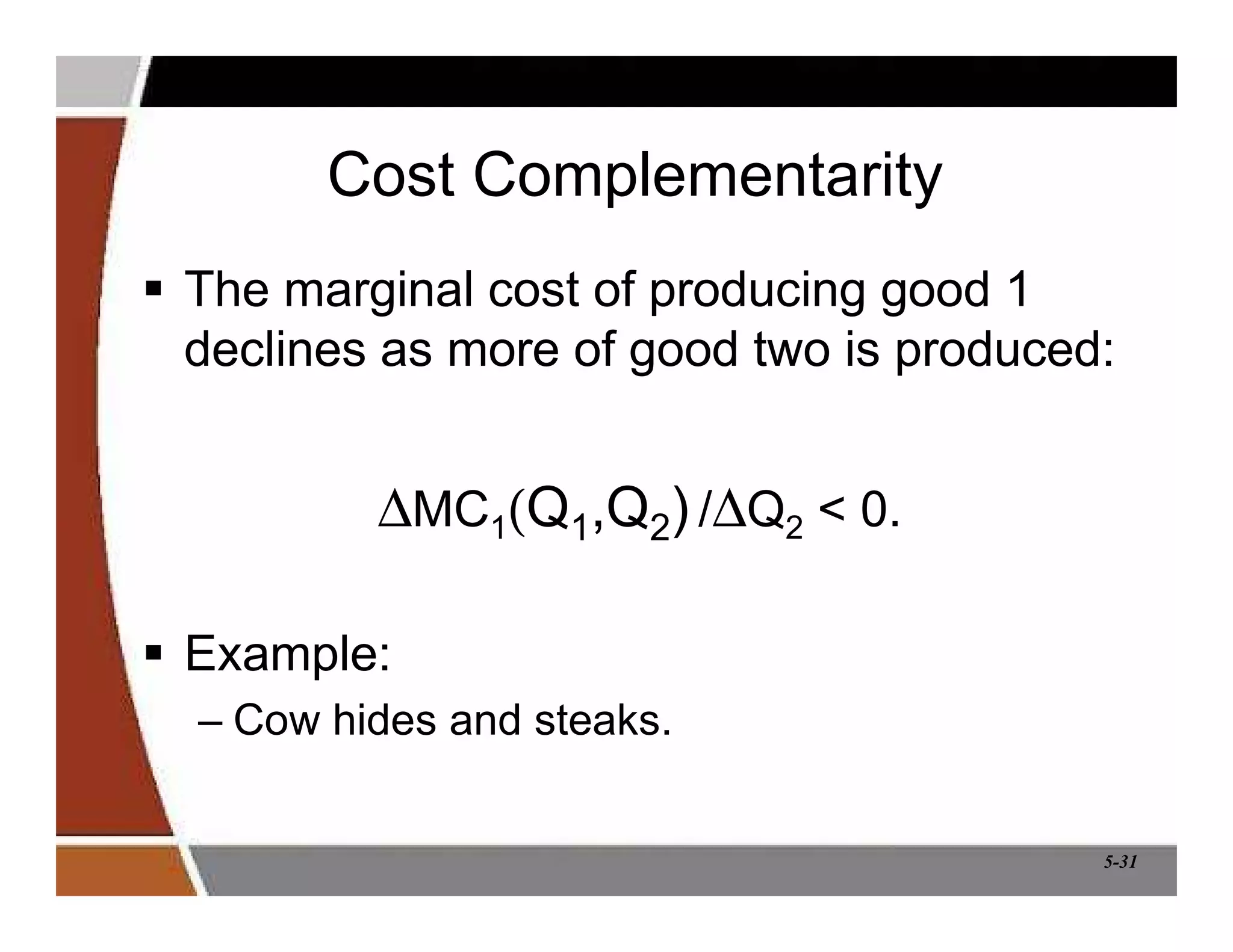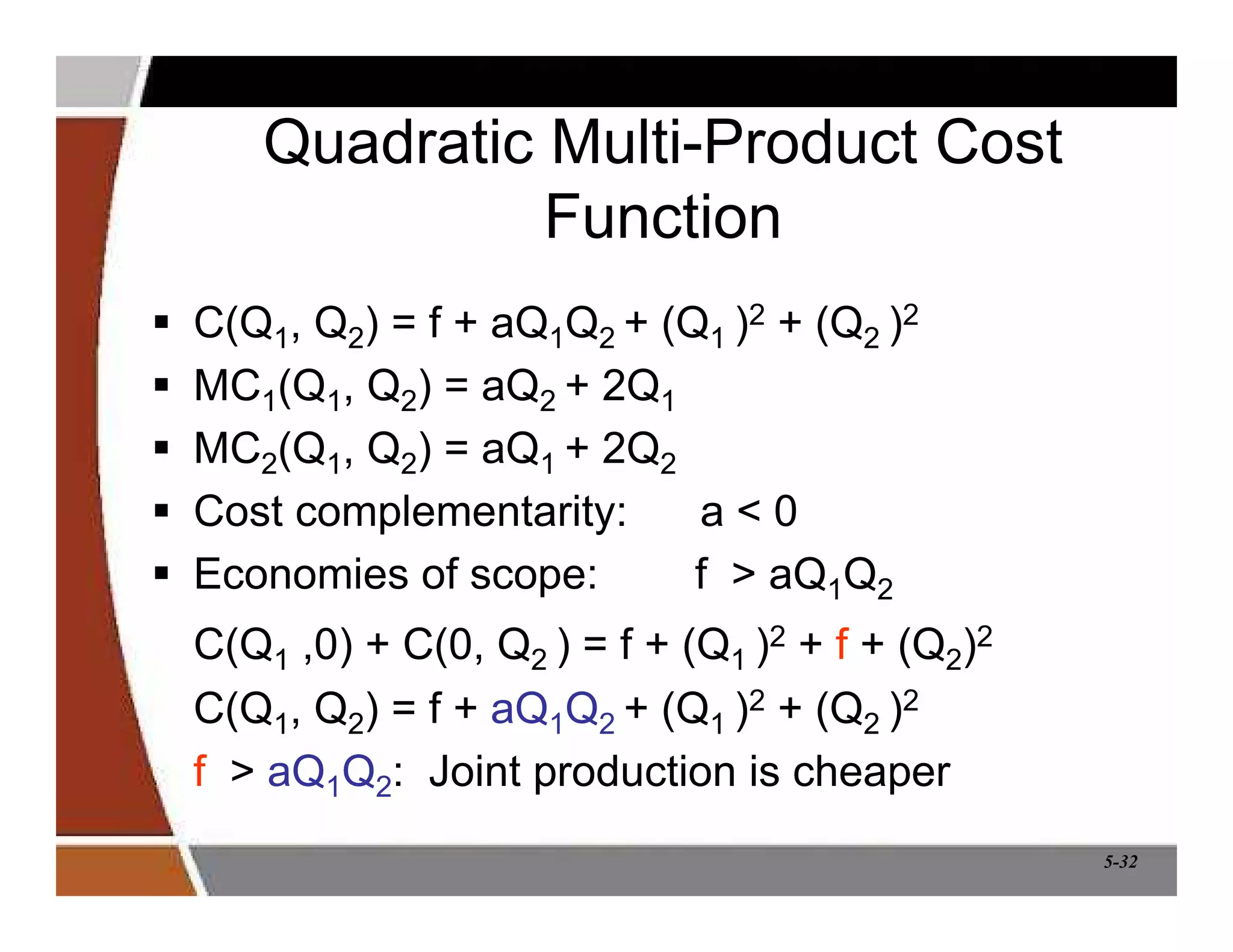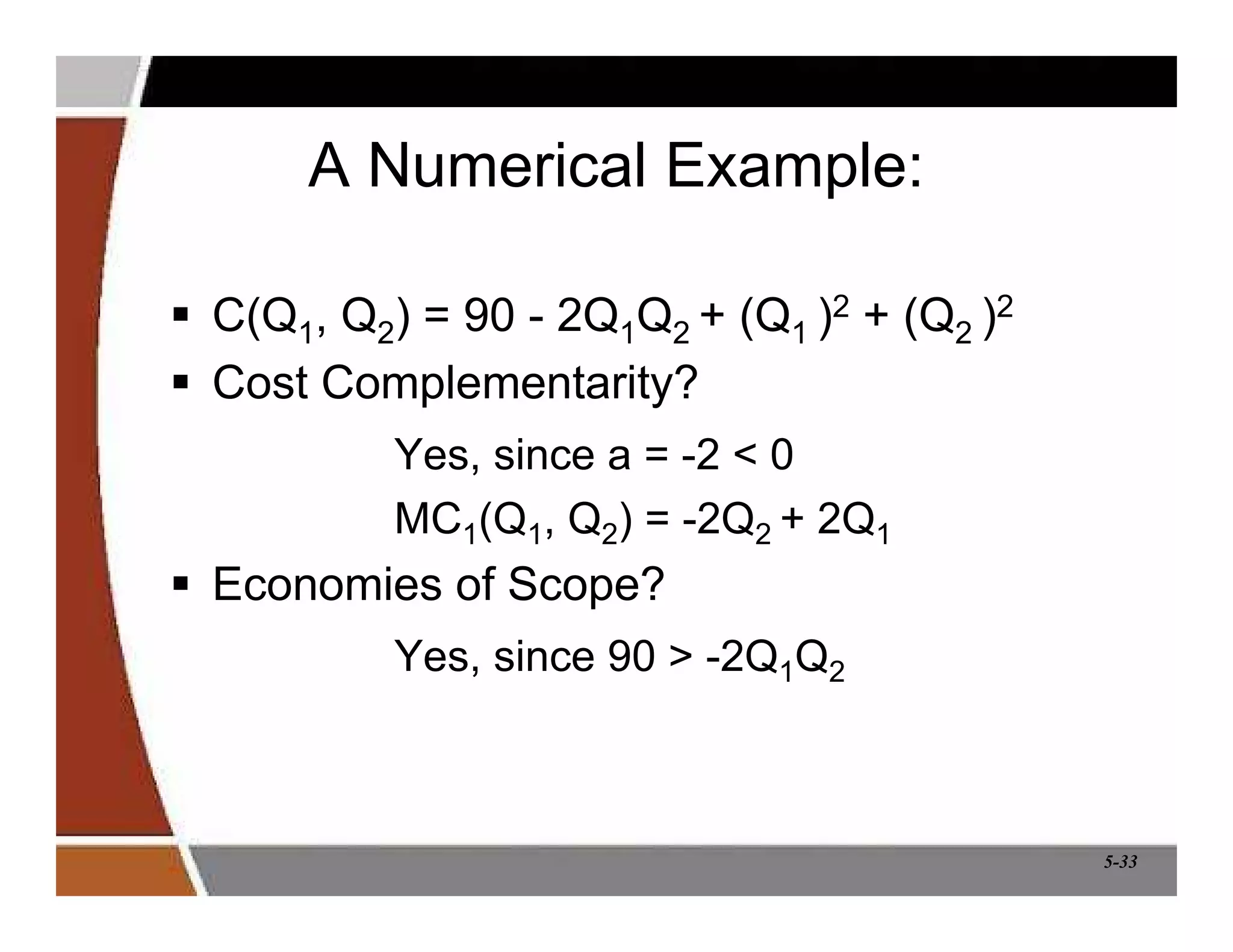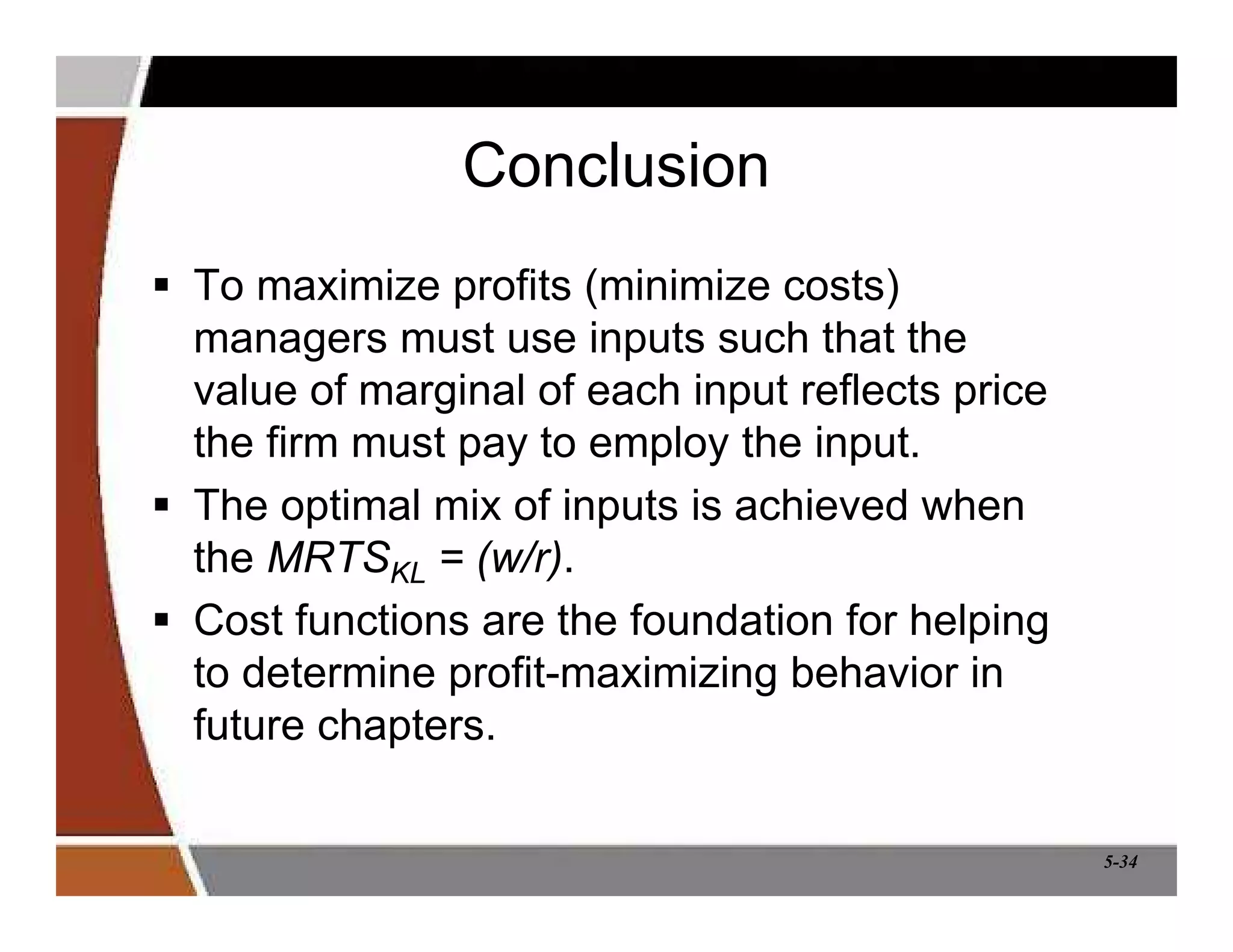This document discusses production and cost analysis concepts from a managerial economics textbook chapter. It defines key terms like total, average and marginal product, isoquants, isocosts, and different cost functions. It explains how firms determine optimal input levels by equalizing the value of marginal products with input prices to minimize costs. Firms produce at the point where the marginal rate of technical substitution equals the input price ratio. Cost functions are important for analyzing profit-maximizing behavior.

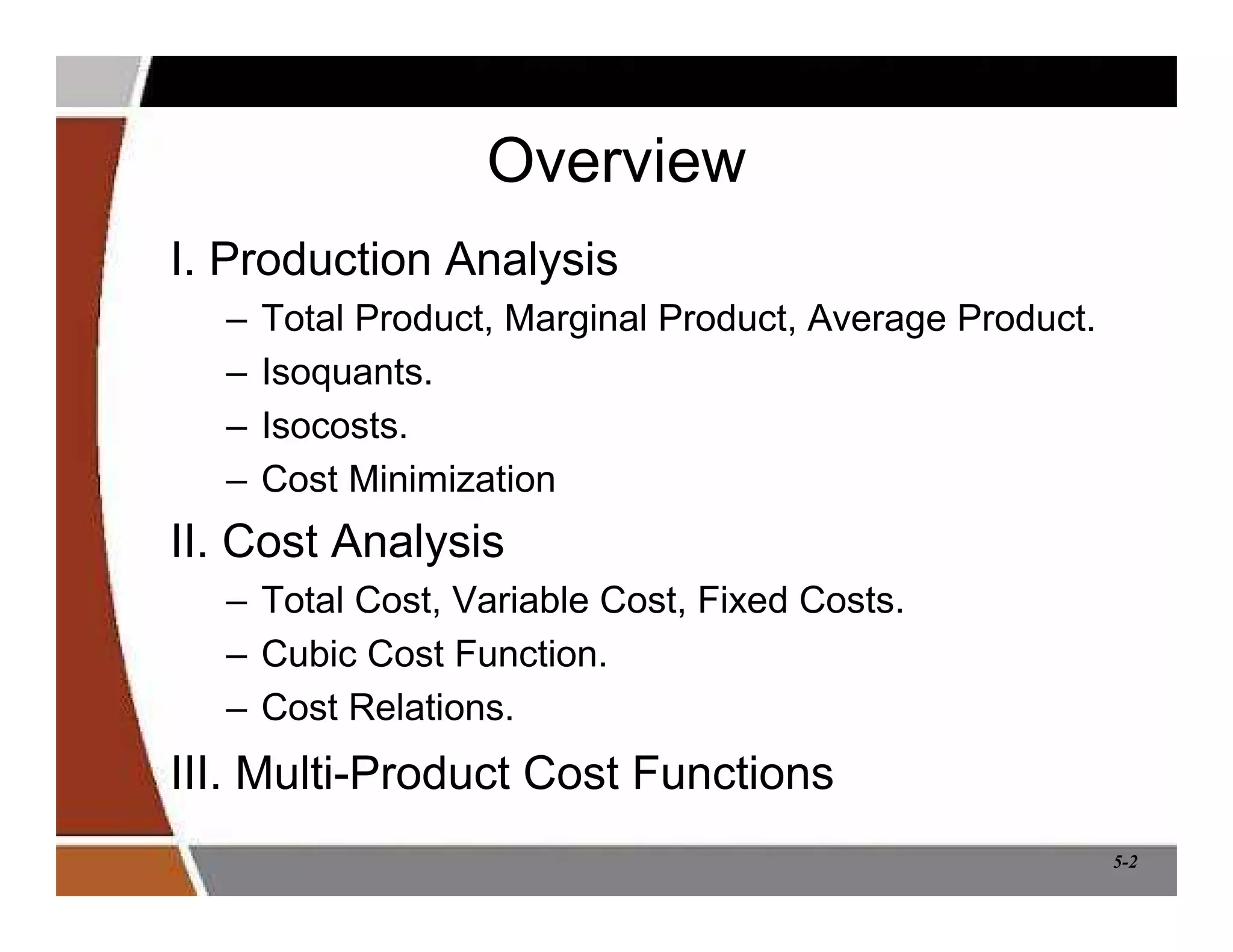
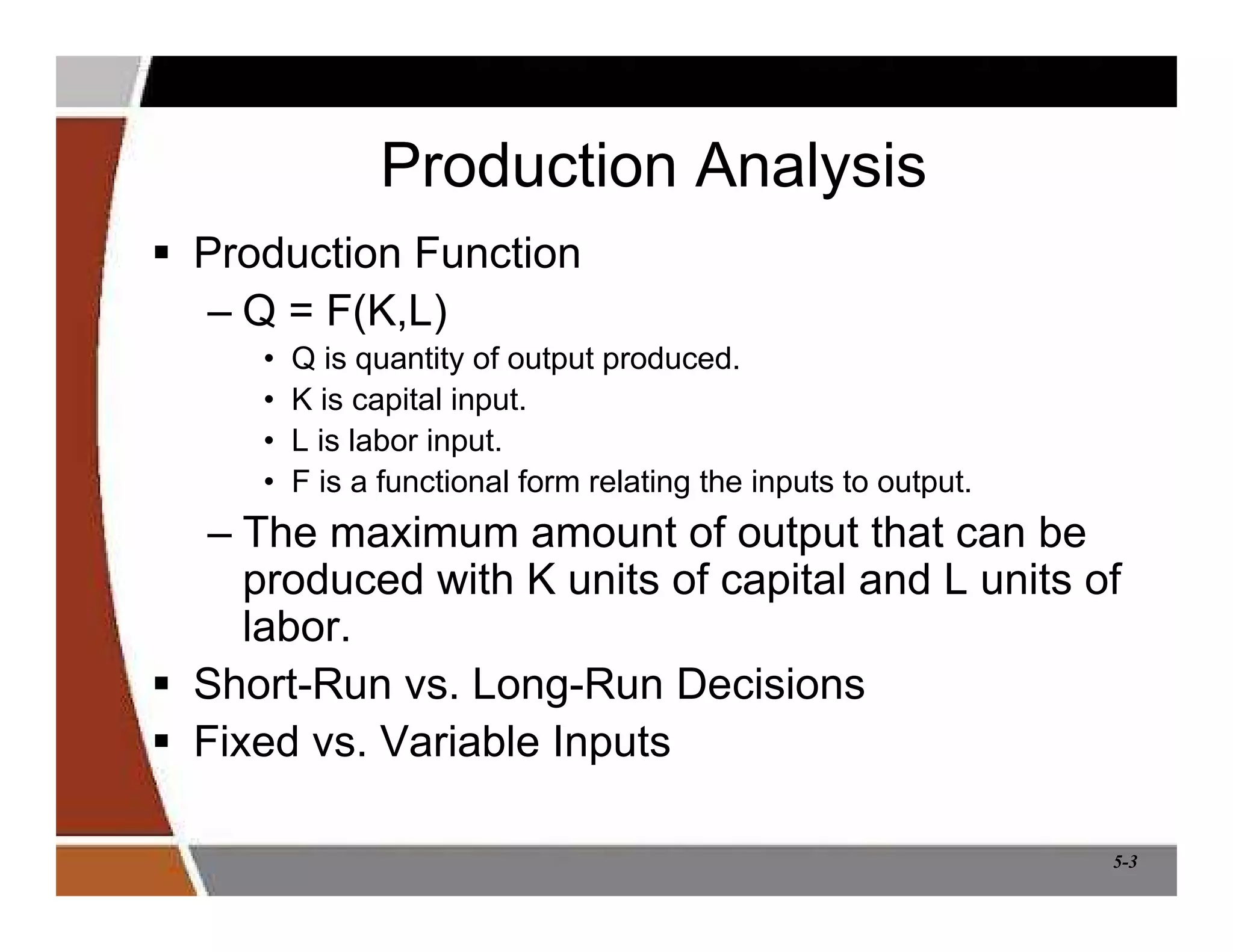

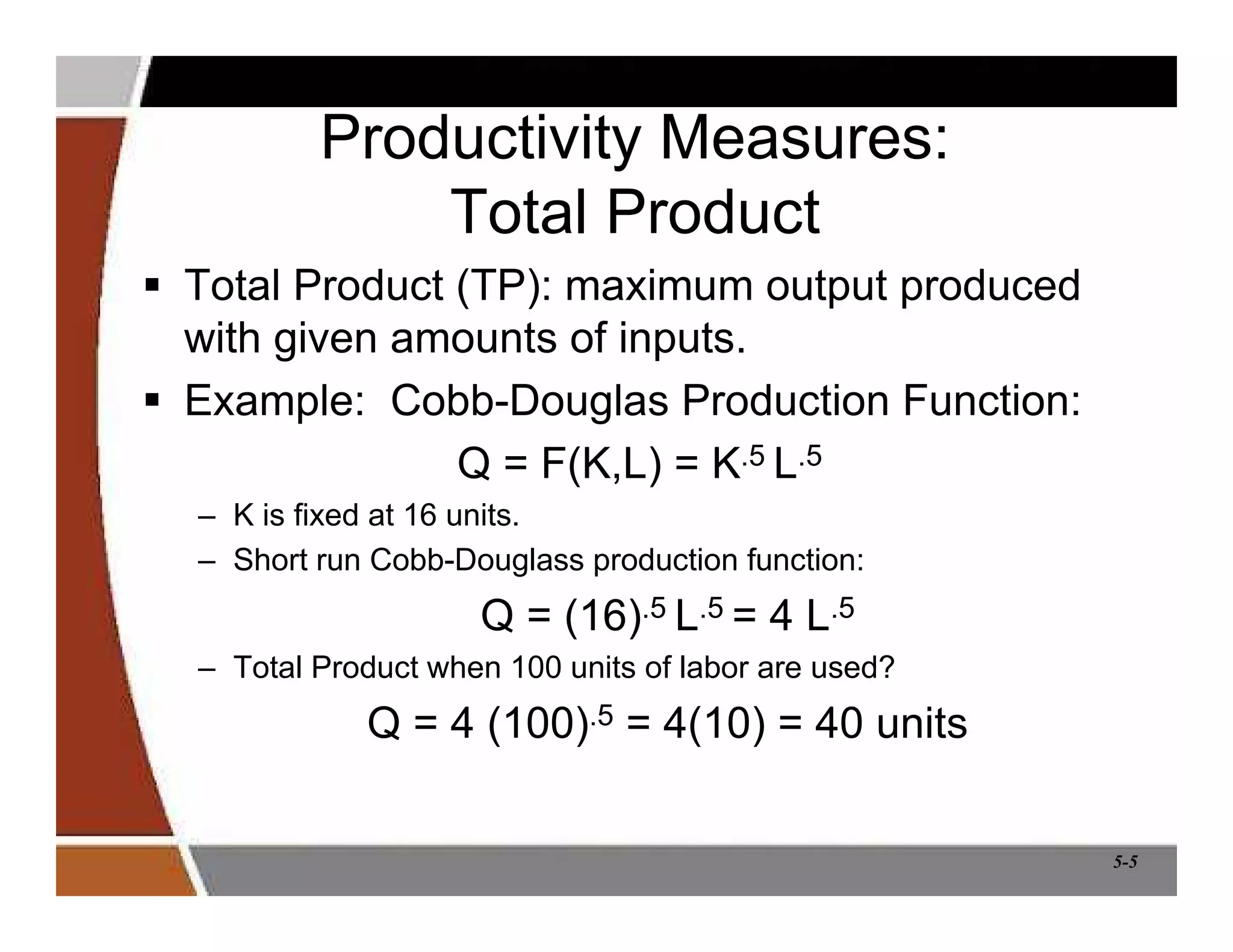
![5-6
Productivity Measures: Average
Product of an Input
Average Product of an Input: measure of output
produced per unit of input.
– Average Product of Labor: APL = Q/L.
• Measures the output of an “average” worker.
• Example: Q = F(K,L) = K.5 L.5
If the inputs are K = 16 and L = 16, then the average product of
labor is APL = [(16) 0.5(16)0.5]/16 = 1.
– Average Product of Capital: APK = Q/K.
• Measures the output of an “average” unit of capital.
• Example: Q = F(K,L) = K.5 L.5
If the inputs are K = 16 and L = 16, then the average product of
capital is APK = [(16)0.5(16)0.5]/16 = 1.](https://image.slidesharecdn.com/chapter5productionprocessandcost-220316012556/75/Chapter-5-production-process-and-cost-6-2048.jpg)
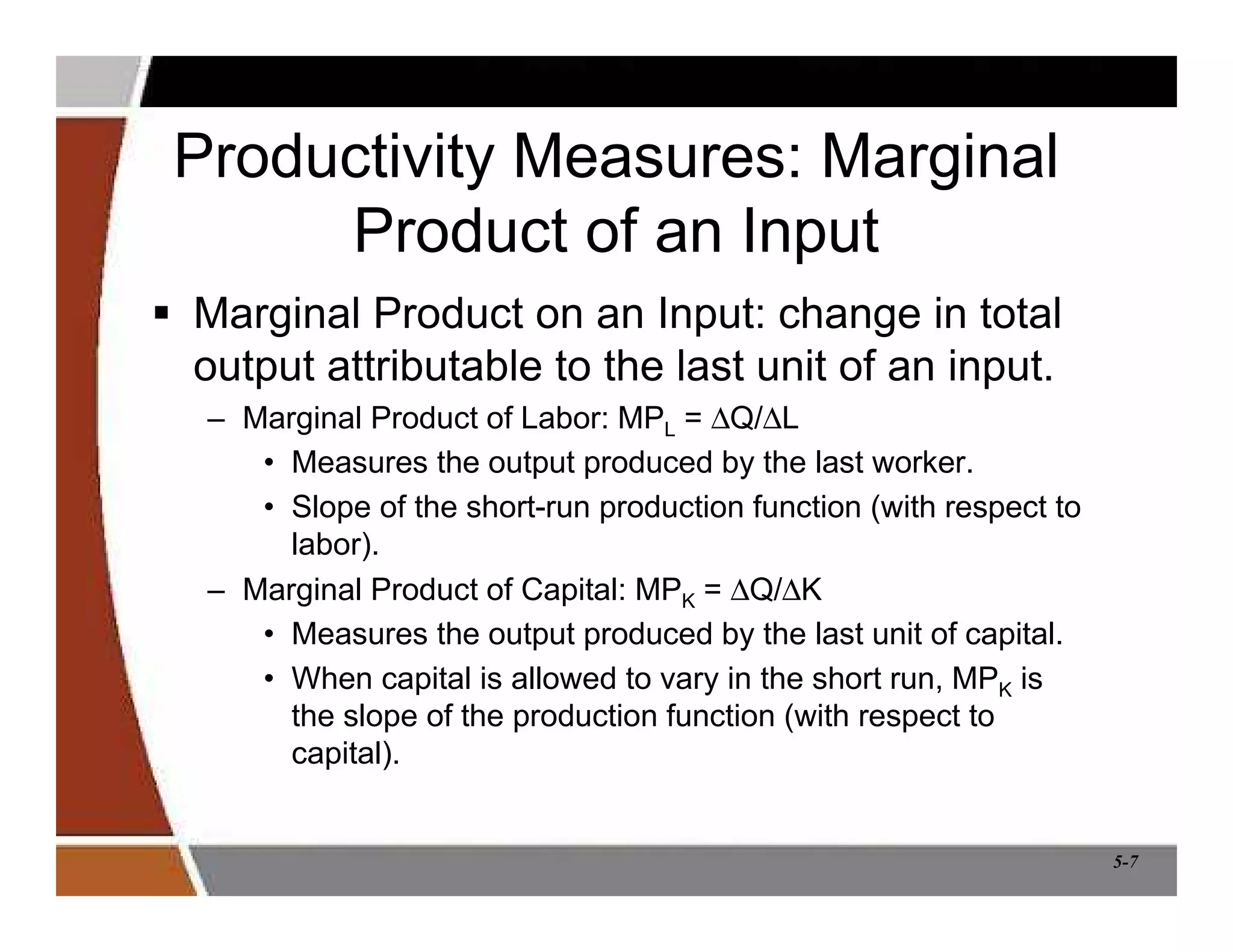
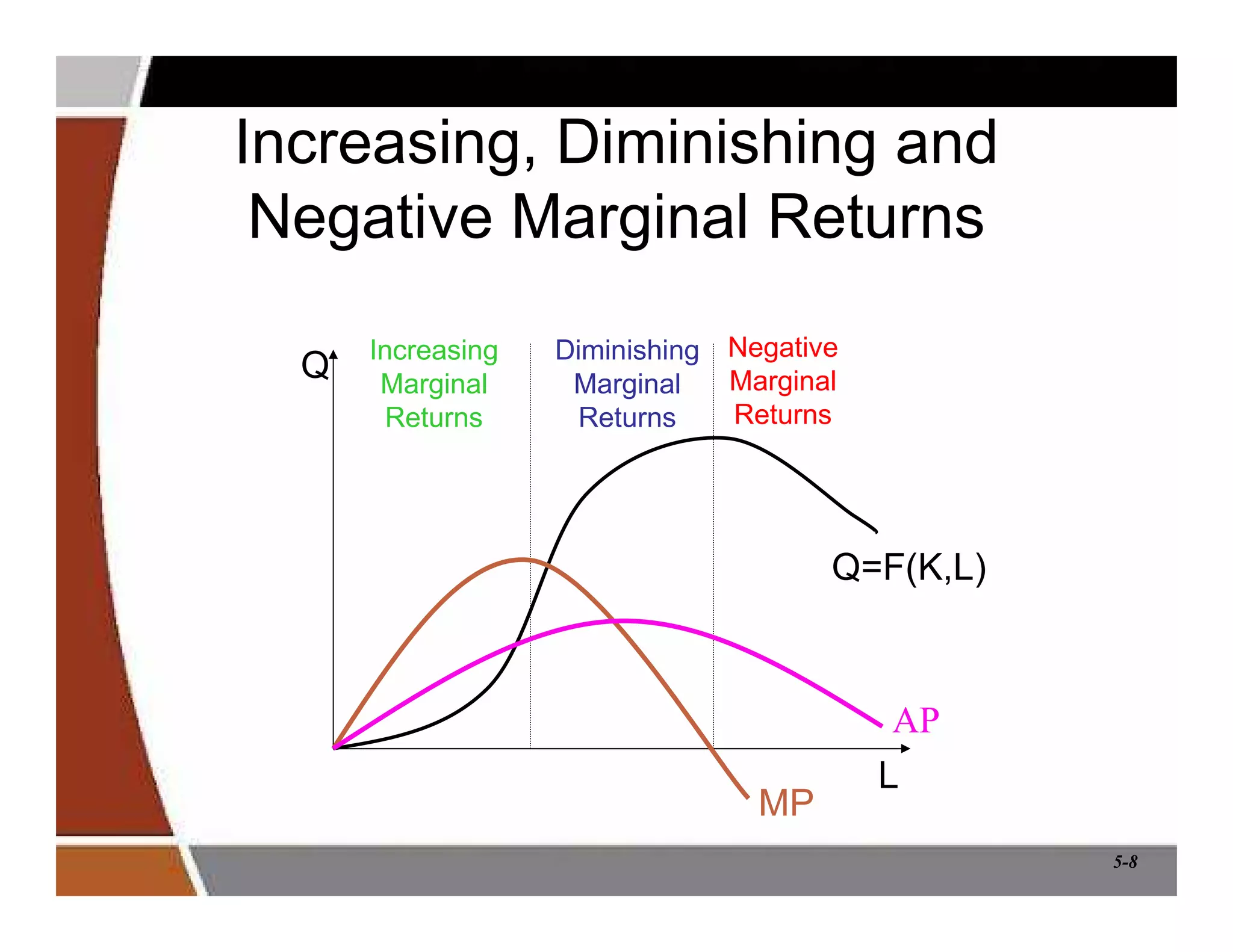
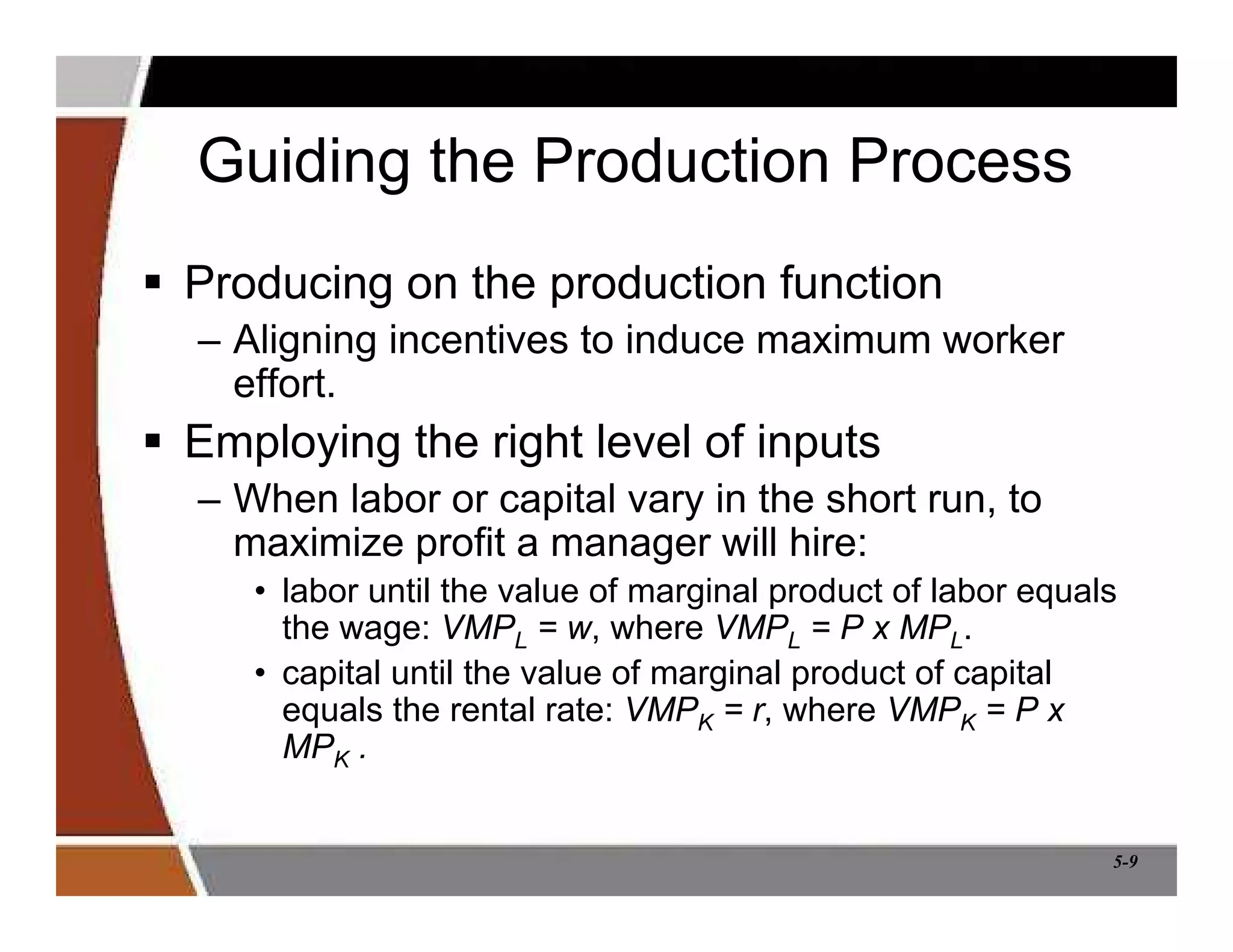
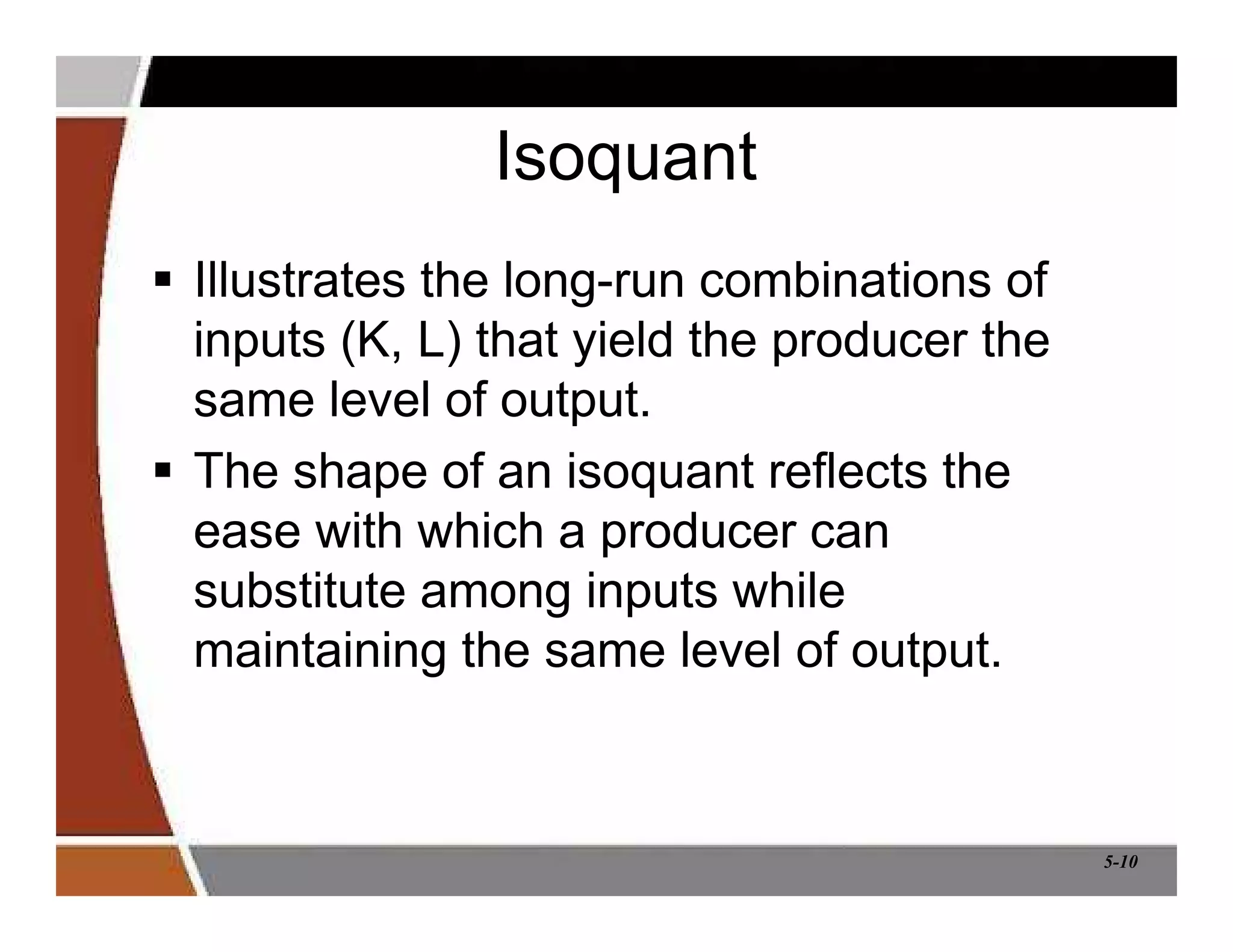
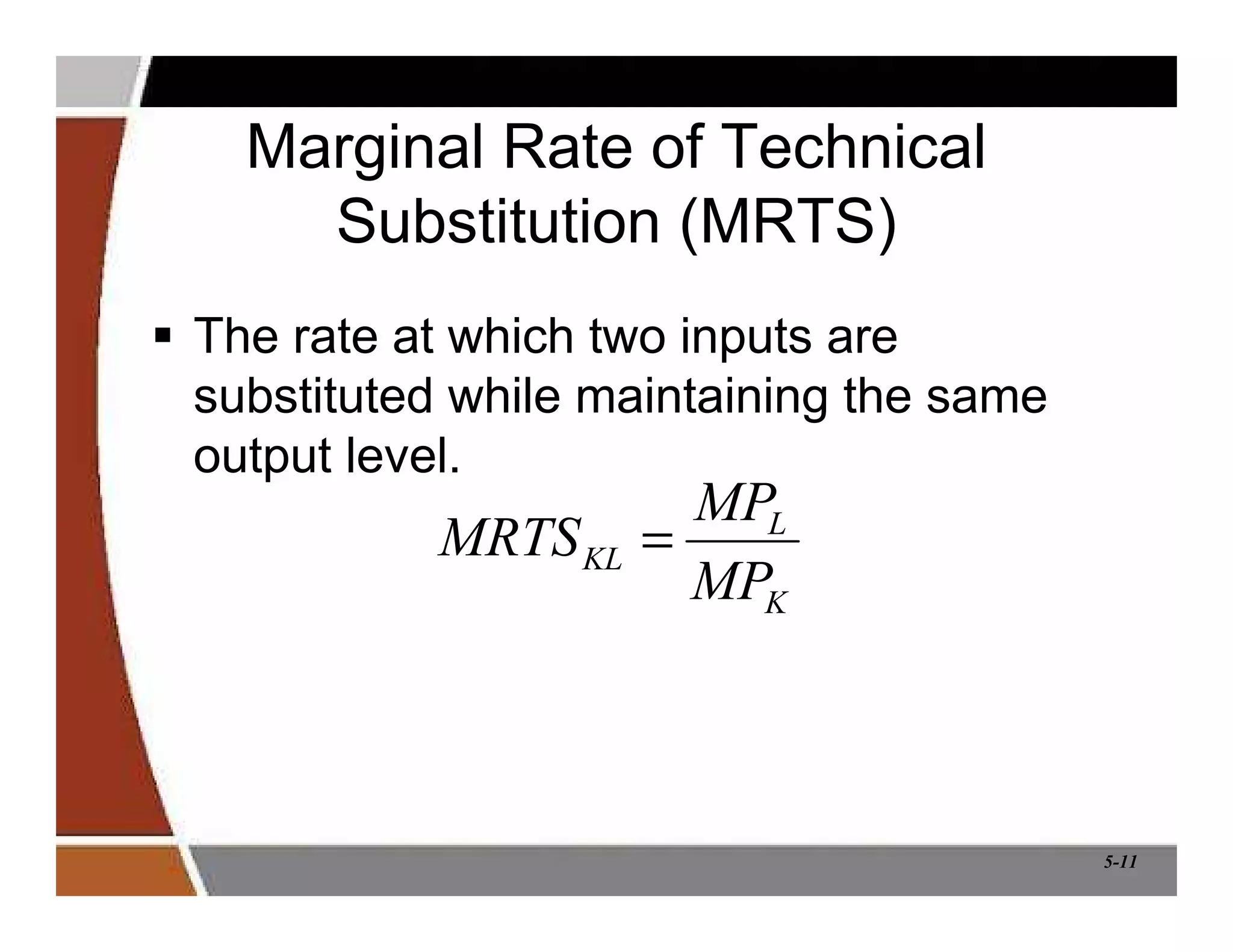
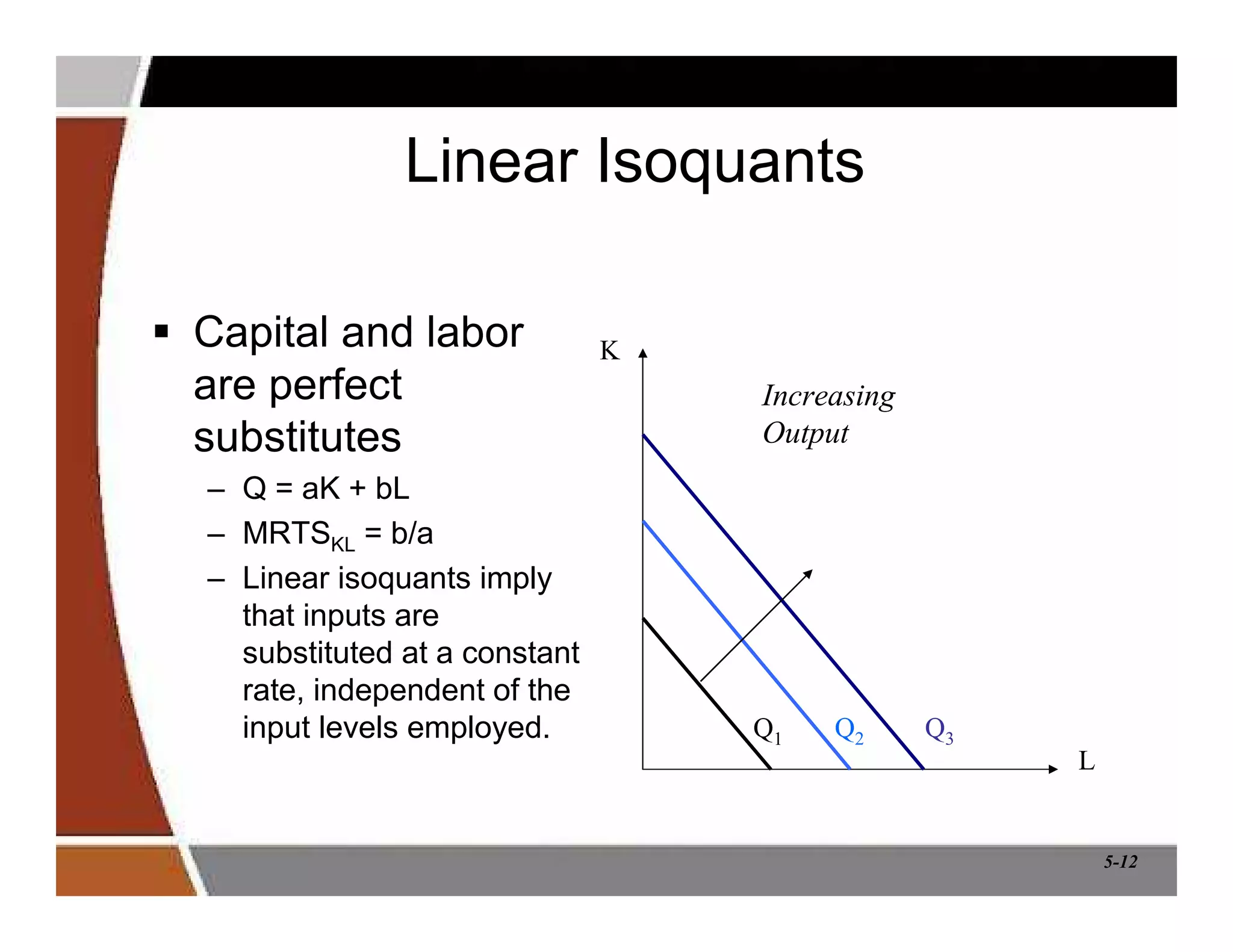
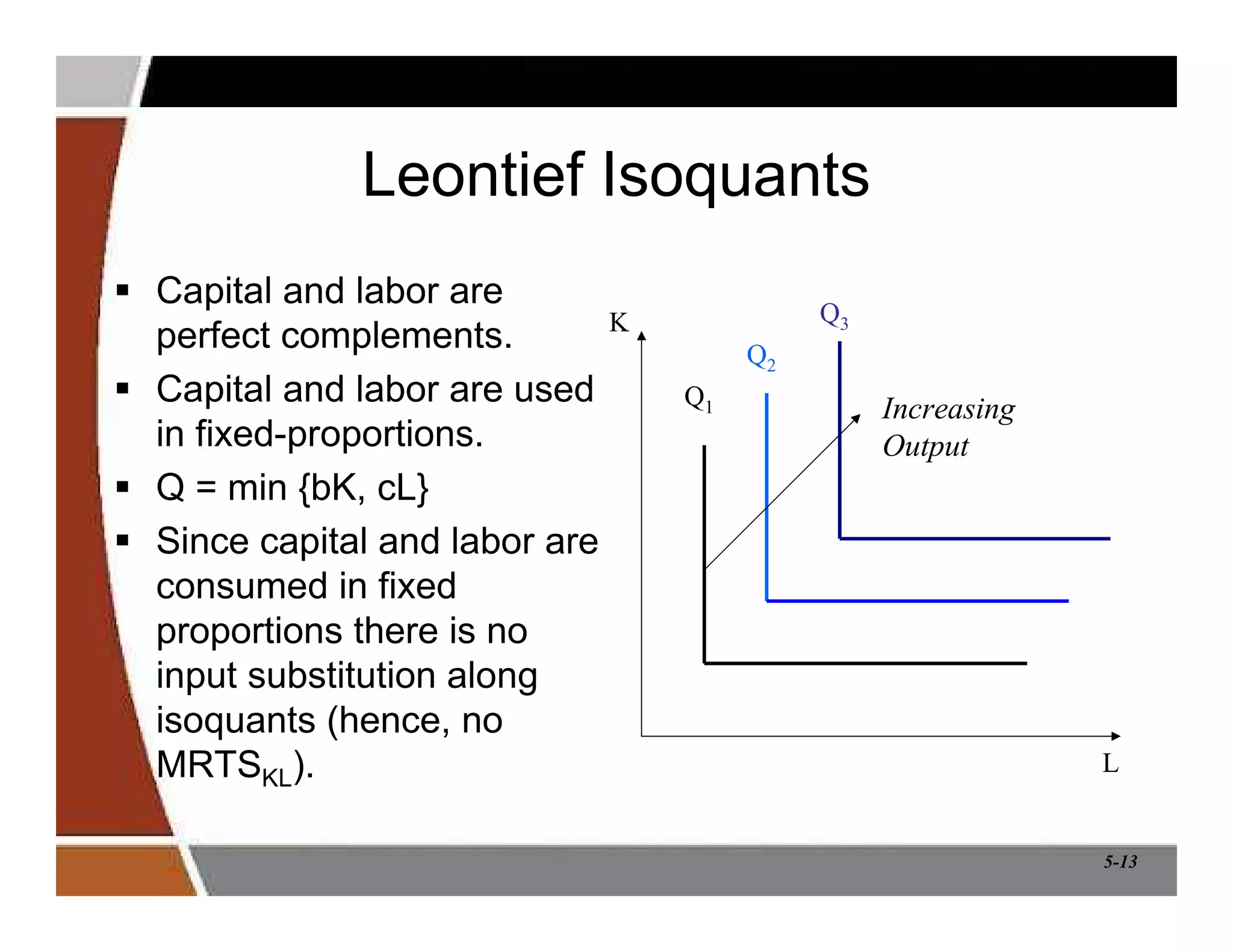

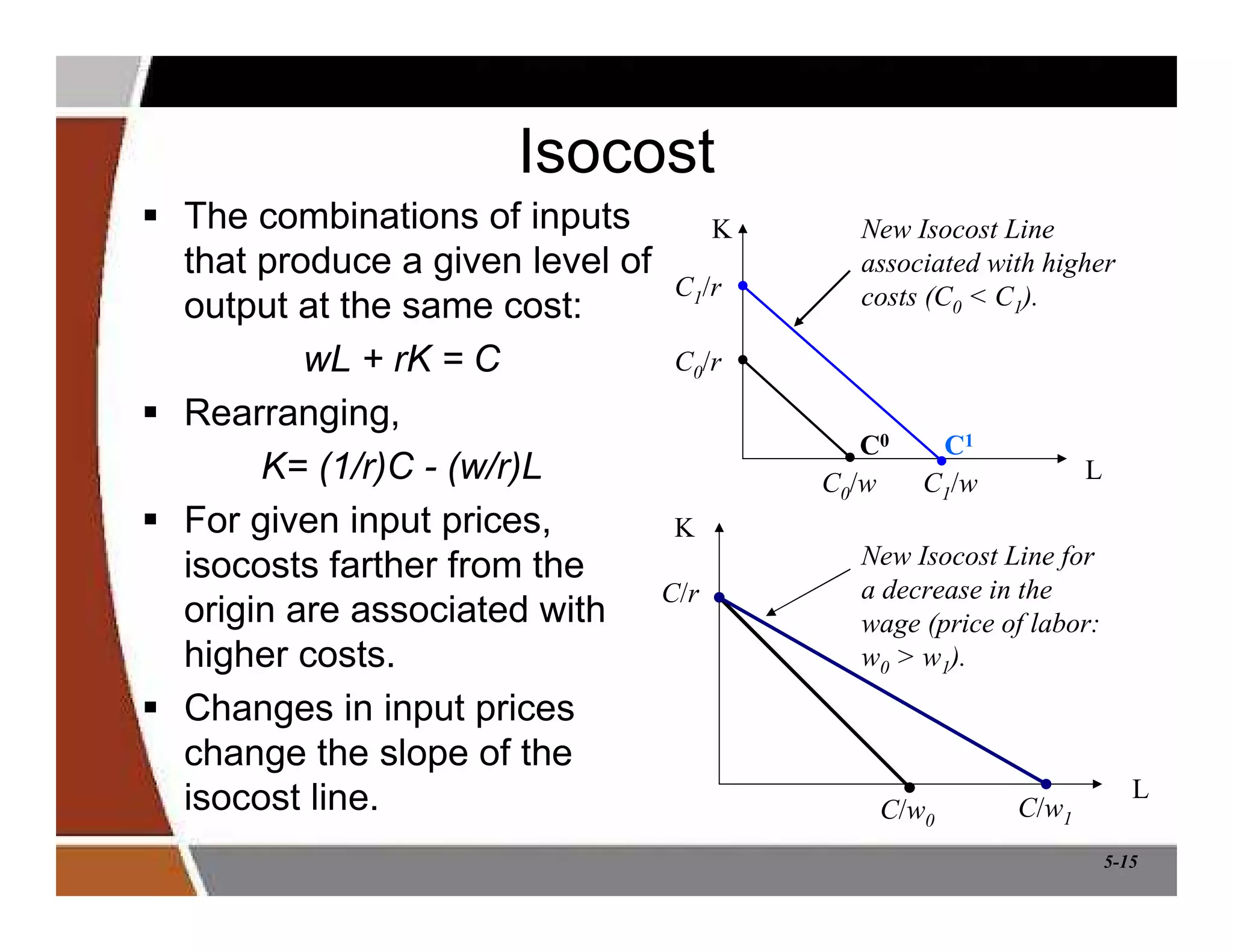
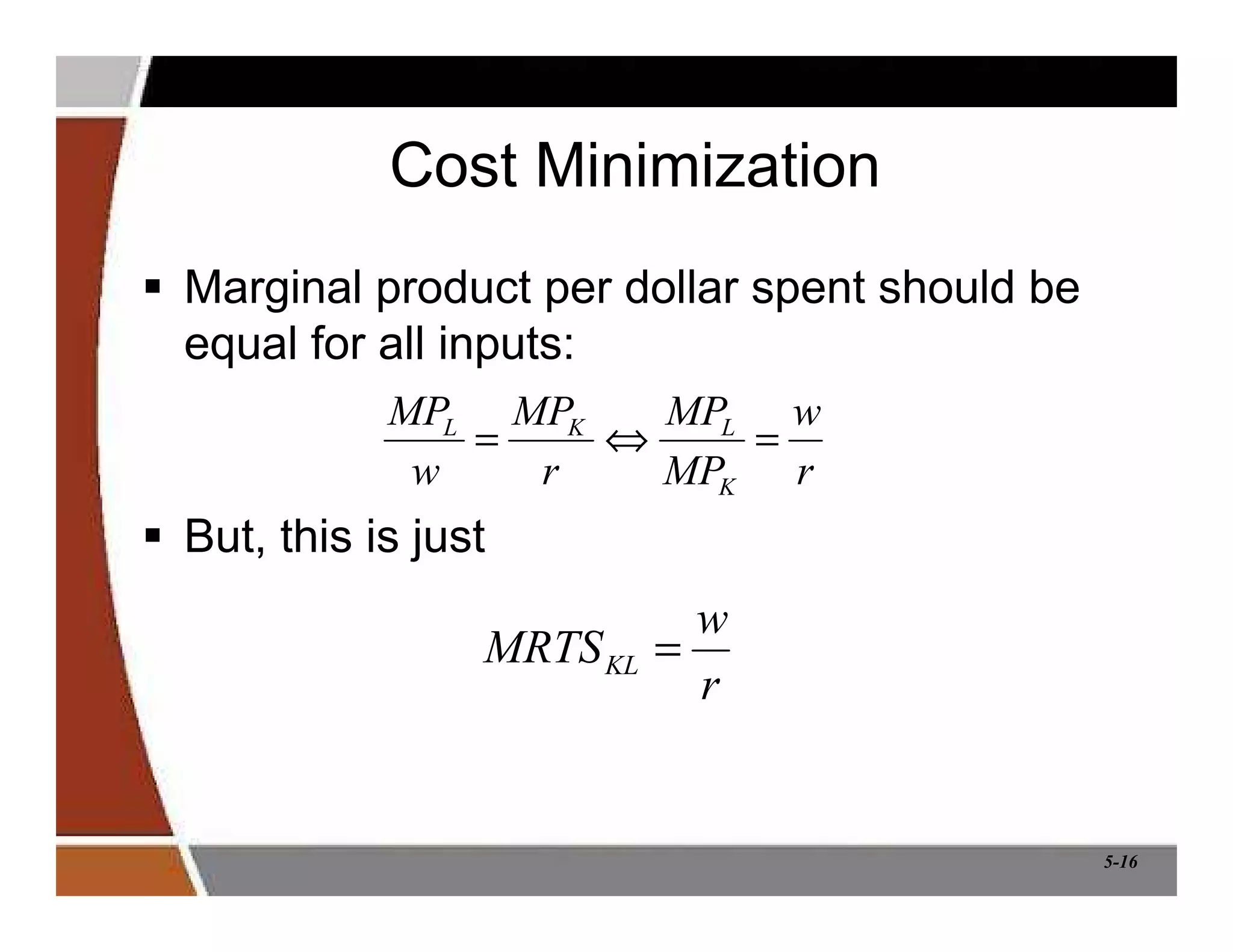
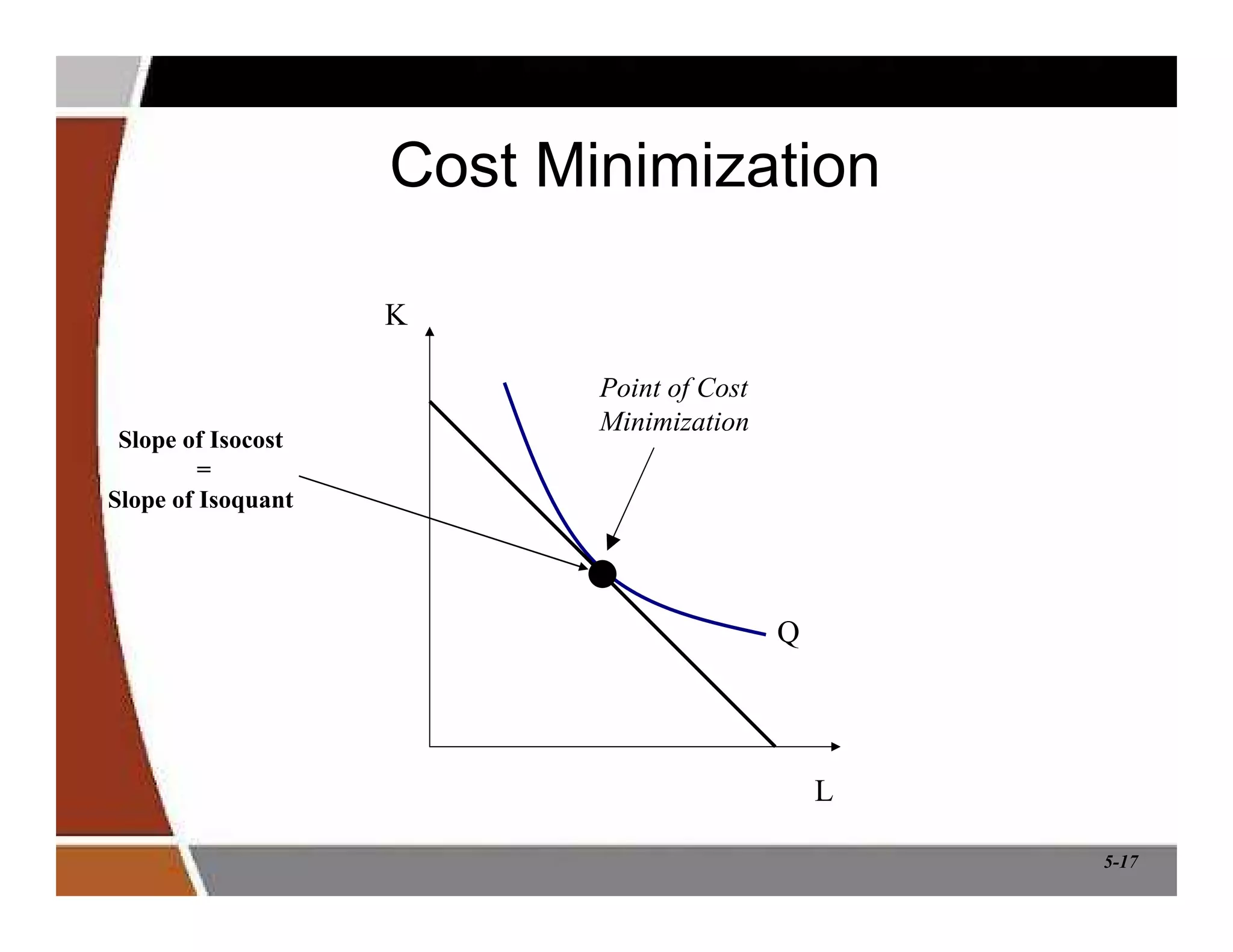
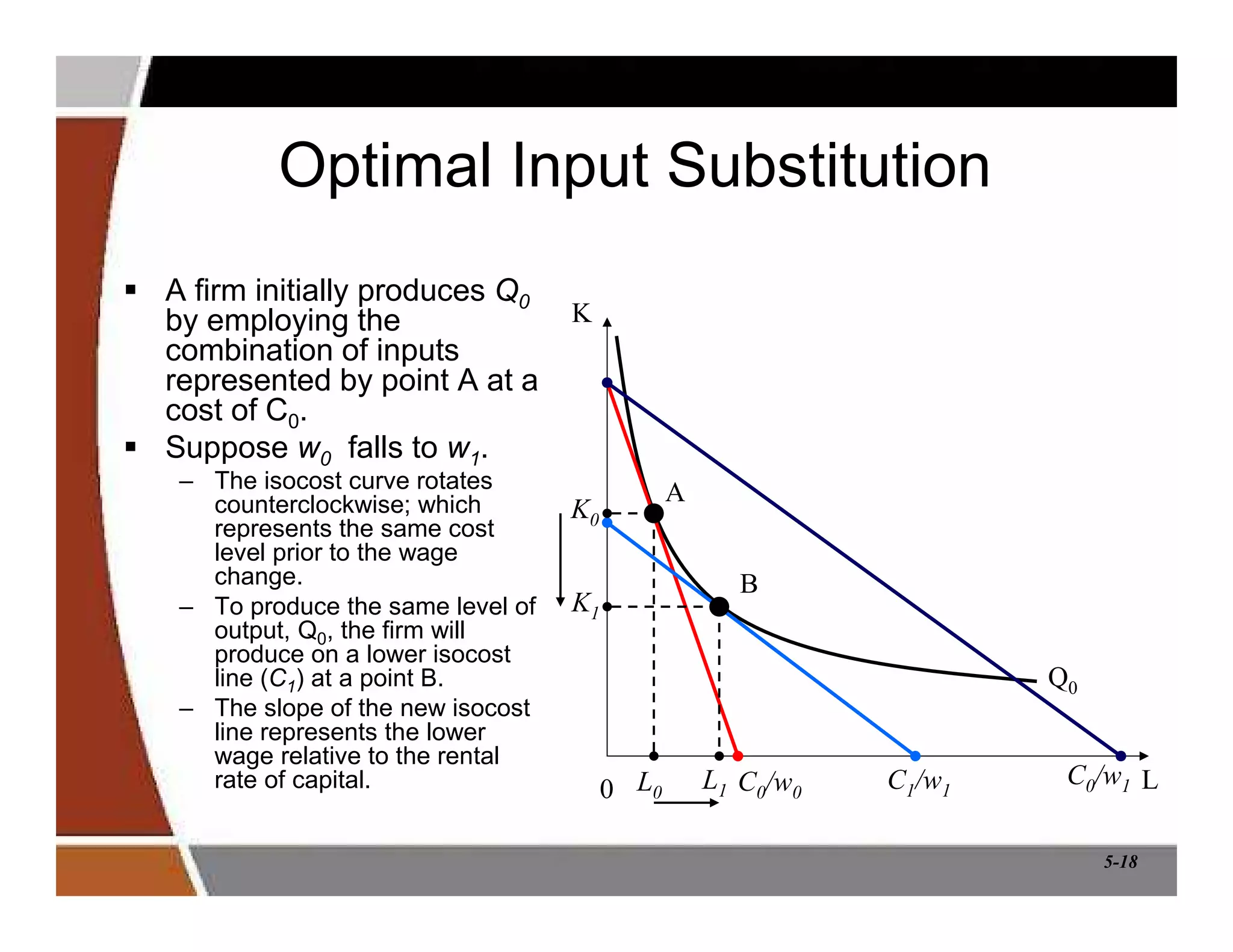


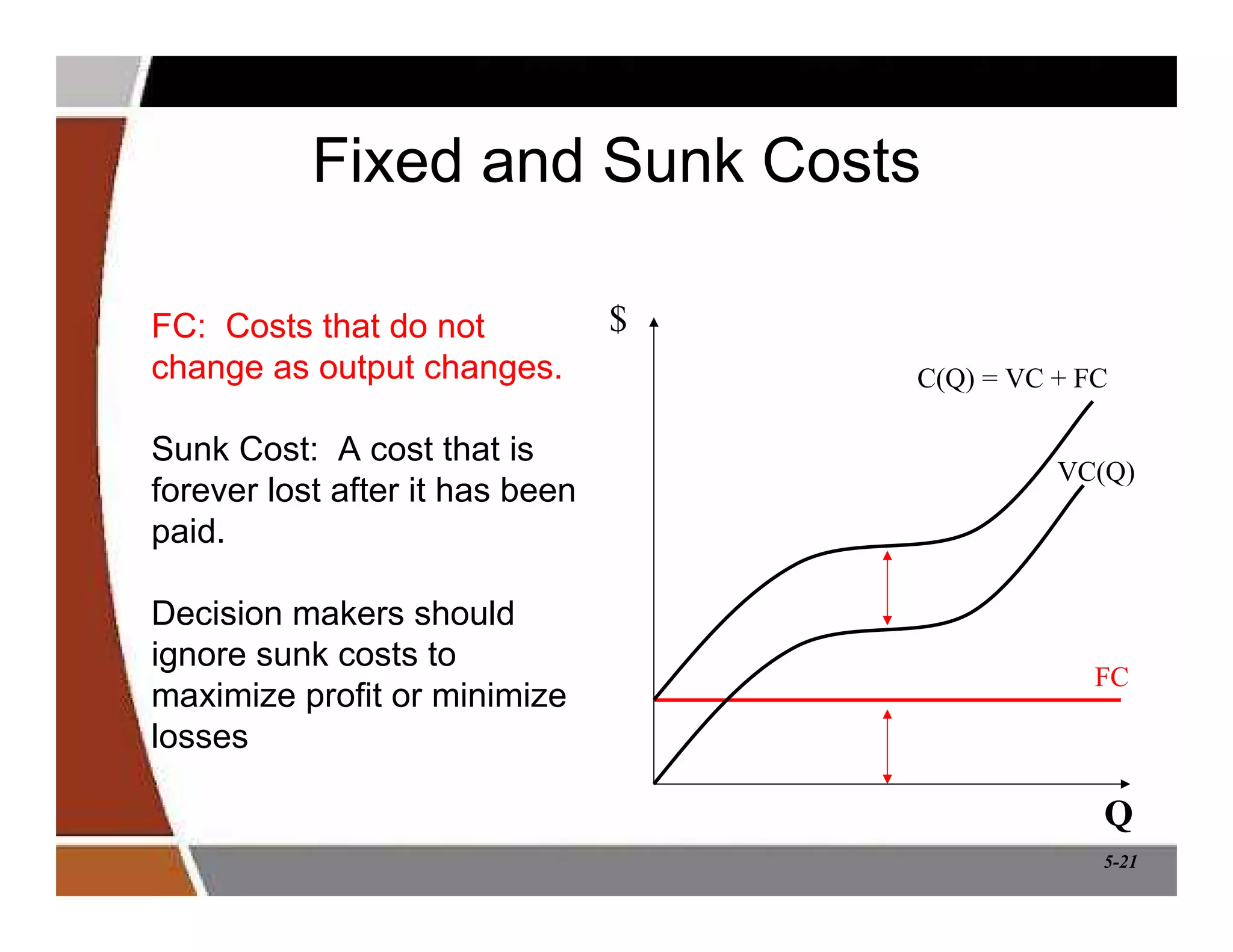
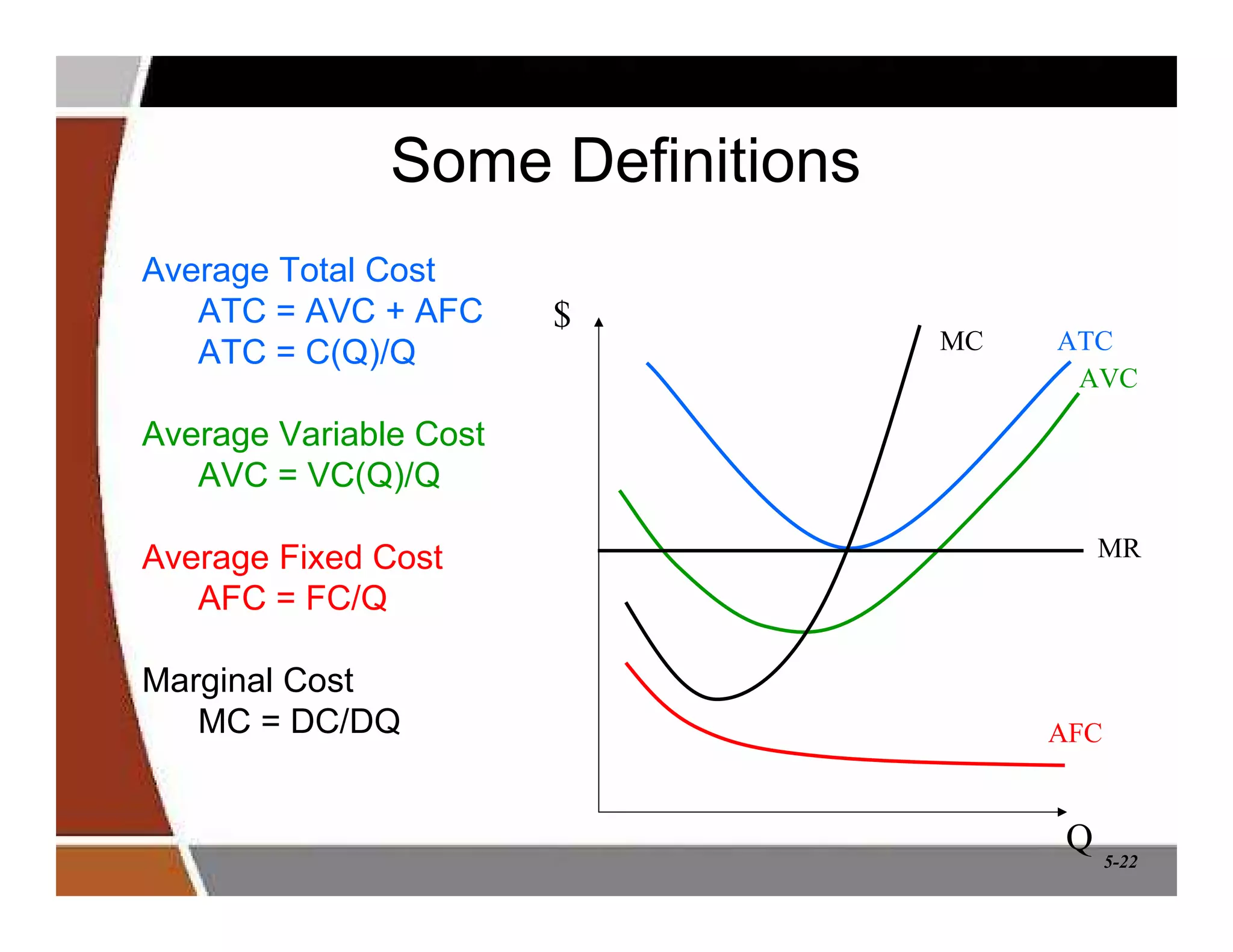

![5-24
Variable Cost
$
Q
ATC
AVC
MC
AVC
Variable Cost
Q0
Q0×AVC
= Q0×[VC(Q0)/ Q0]
= VC(Q0)
Minimum of AVC](https://image.slidesharecdn.com/chapter5productionprocessandcost-220316012556/75/Chapter-5-production-process-and-cost-24-2048.jpg)
![5-25
$
Q
ATC
AVC
MC
ATC
Total Cost
Q0
Q0×ATC
= Q0×[C(Q0)/ Q0]
= C(Q0)
Total Cost
Minimum of ATC](https://image.slidesharecdn.com/chapter5productionprocessandcost-220316012556/75/Chapter-5-production-process-and-cost-25-2048.jpg)

